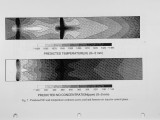| OCR Text |
Show Table 1. C O A L ANALYSIS (%, dry basis) Lajagua Ashfordy Pittsburgh Hunter Gascoigne Thoresby Betts Koonfon- Ash VM FC C H 0 N S Calorific Value (kJ/kg) < 63 jim wt% 8.7 36.1 55.2 73.2 5.1 11.0 1.41 0.67 30063 62.2 10.1 37.7 52.2 72.8 5.8 9.0 1.39 0.87 29673 59.9 No.8 11.5 31.5 57.0 73.3 4.50 7.47 1.45 1.78 30500 62.0 Valley 12.3 31.4 56.3 72.8 4.75 8.06 1.61 0.45 29460 62.7 Wood 17.83 30.39 51.78 68.36 4.81 6.39 1.41 1.19 27180 61.0 16.3 30.9 52.9 71.2 4.15 5.43 1.60 1.37 28540 51.4 Lane 17.0 26.8 56.2 72.0 4.46 2.54 1.41 2.58 29563 74.5 teine 13.9 27.0 59.0 71.0 4.37 8.42 1.74 0.55 28360 59.2 The tunnel-mix propane burner produces a very short flame so that the overall length of the primary combustion zone is less than 20 cm from the burner exit (confirmed by O2 and CO measurements in the near-burner region). In addition to the thermal N O emission from the burner (typically 110-120 ppm), the primary zone exit N O concentration can be varied by doping the propane supply with ammonia. Rebum coal is injected 40 cm downstream of the burner exit through two horizontally opposed nozzles of id. 8 m m in a direction perpendicular to the main gas flow. Over-fire or bum-out air is introduced through two 10 m m nozzles, normally located at a distance of 70 cm from the rebum coal injectors, although this distance can be varied to assess the influence of rebum zone residence time. The total residence time of the furnace is between 1.2 to 1.8s depending on operating conditions. Previous work [3] has shown that this was sufficient to ensure good burnout and was the optimum for N O reduction in the present reactor. Mixing effects were investigated for two or four reburn-coal injectors in a horizontally opposed configuration, with an injector mounted on each side wall and directed perpendicular to the flow direction of the combustion products entering the rebum zone. The diameter of the injector nozzles was reduced from 8 to 5.7 m m as more injectors were used, so as to maintain a constant jet exit velocity for each configuration. Eight different coals were used. Their analysis and details are given in Table 1. The coals were supplied in commercial pulverised form and were mostly fired without further separation. Experimental trials were conducted over the following ranges of operating conditions: overall rebum zone air/fuel stoichiometric ratio (SR2, including carrier-gas air), 0.83 - 1.0; primary zone air/fuel stoichiometric ratio (SRI), 1.0 to 1.18; rebum fuel fraction RF (ratio of the thermal contribution made by the rebum coal to the primary fuel) 0.10 to 0.35; rebum coal carrier gas oxygen concentration, 2 1 % and 12%; rebum zone residence time, 120 to 840 ms; rebum zone inlet N O concentration, 117 to 1050 ppm. The bum-out zone stoichiometric ratio (SR3) was kept constant at between 1.04 to 1.1, which resulted in good carbon bumout efficiencies, typically between 95 and 97%. Ash samples collected at the cyclone were |





















